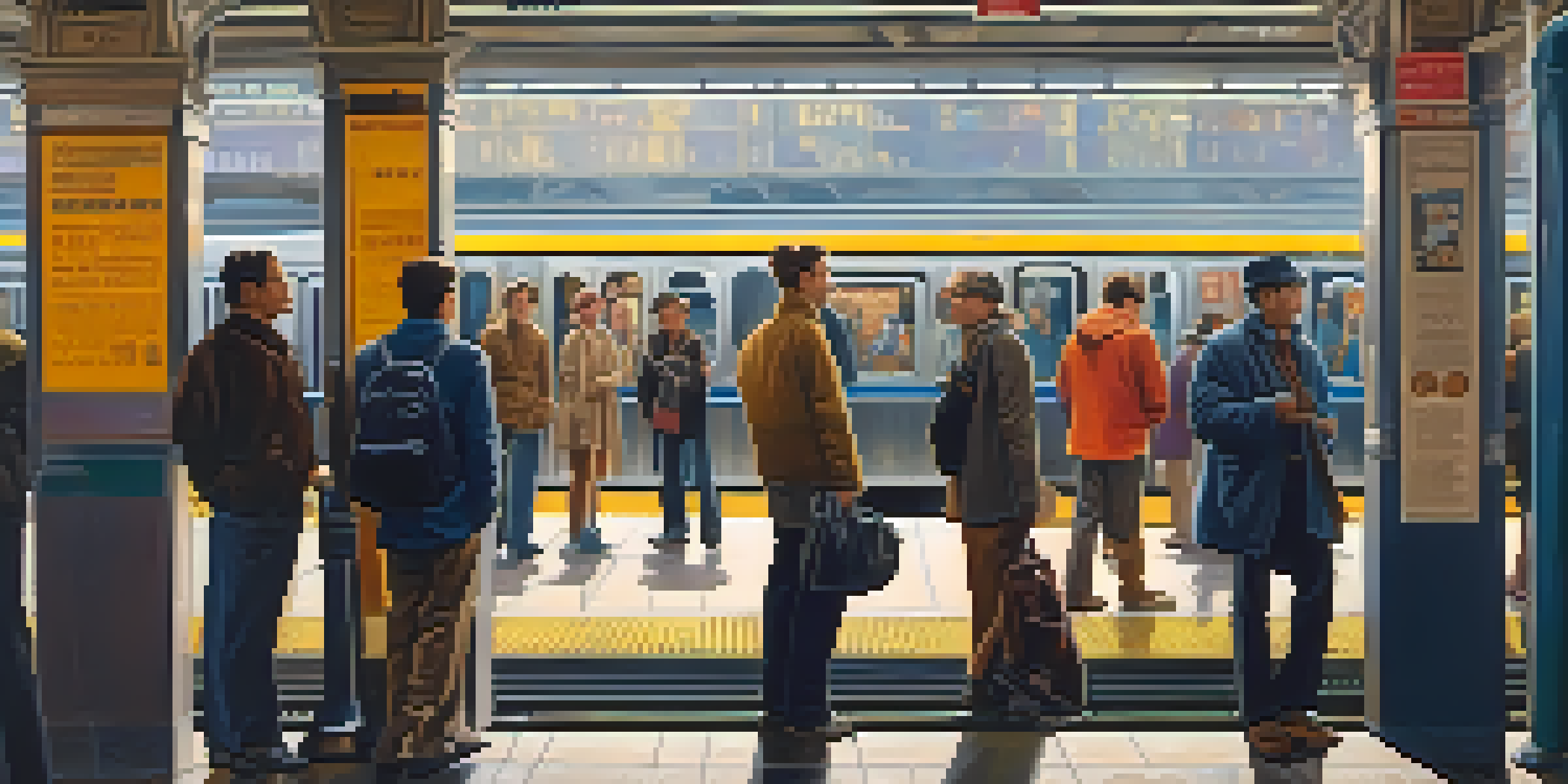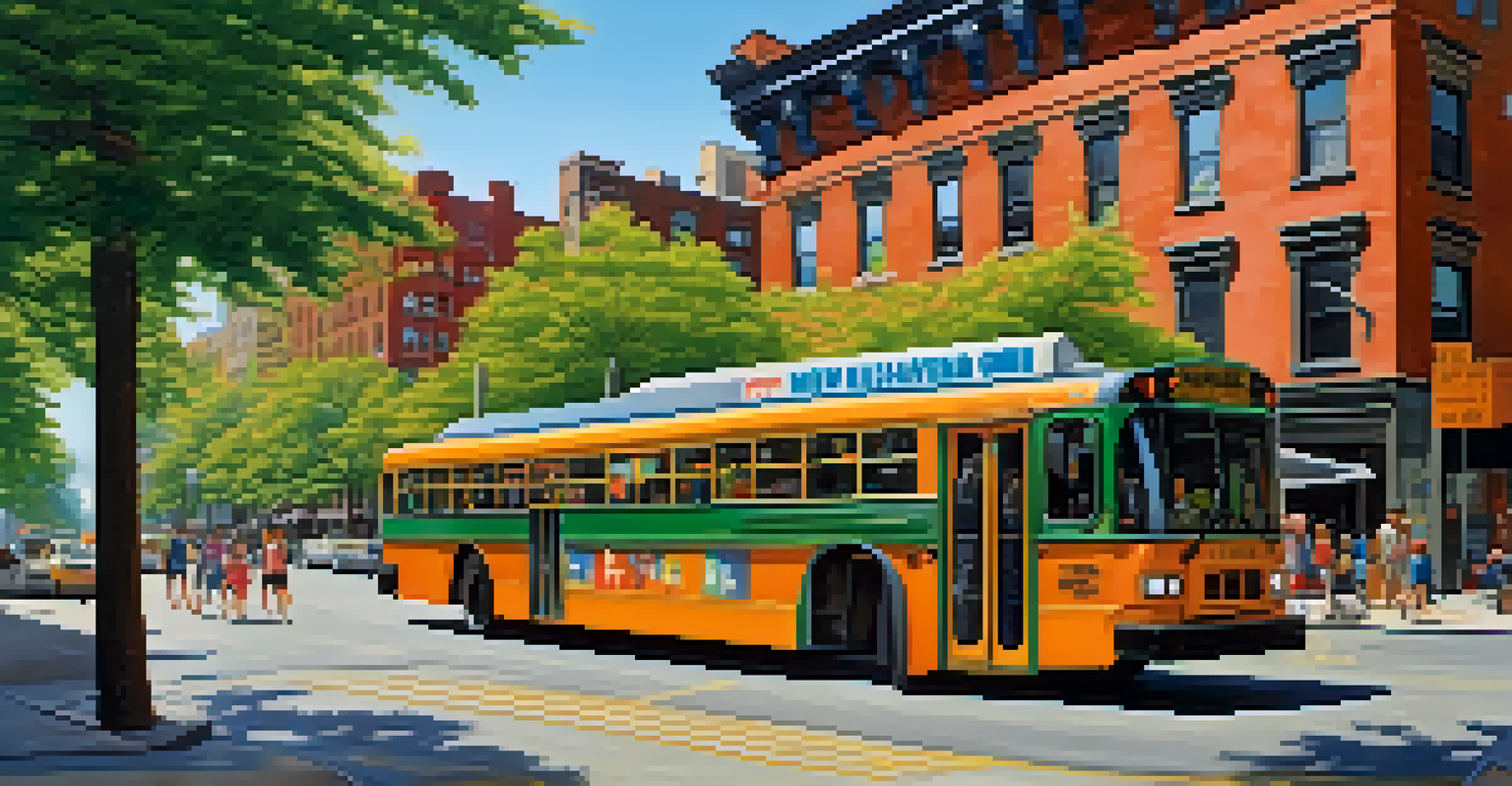Challenges of Public Transit Access for NYC's Underserved Areas

Understanding Public Transit Access in NYC's Underserved Areas
Public transit is a lifeline for many New Yorkers, connecting them to jobs, education, and essential services. However, underserved areas often face significant barriers that hinder access to this vital resource. Understanding these challenges is the first step in addressing them effectively.
Public transportation is not just a way to get from point A to point B; it’s a vital public service that connects people to opportunities and resources.
Underserved areas in NYC, often characterized by lower income and higher poverty rates, frequently lack sufficient public transit options. This can lead to longer commute times and increased transportation costs, exacerbating the cycle of disadvantage. For many residents, reliable access to public transit is not just a convenience; it’s a necessity for survival.
Moreover, the physical infrastructure in these neighborhoods may not support easy access to transit hubs. Poorly maintained stations, limited bus routes, and minimal service frequency can leave residents feeling isolated. When public transit fails to meet the needs of a community, the repercussions can be far-reaching.
Barriers to Effective Transit Access
One of the significant barriers to effective transit access is the lack of investment in infrastructure in underserved areas. While some parts of NYC enjoy modern stations and frequent service, others are left with outdated facilities and limited options. This disparity often reflects broader societal inequities.

Additionally, safety concerns can deter residents from using public transit. Poor lighting, high crime rates, and neglected public spaces contribute to a heightened sense of insecurity. When people feel unsafe, they are less likely to rely on public transportation, leading to further isolation.
Transit Access Fuels Economic Growth
Reliable public transit significantly improves employment opportunities for residents in underserved areas, enhancing their economic mobility.
Furthermore, language barriers and a lack of information about available services can complicate access for immigrant communities. Without proper resources or multilingual support, residents may struggle to navigate the transit system, missing out on opportunities for employment and education that could improve their circumstances.
The Impact of Public Transit Access on Employment
Access to reliable public transit significantly influences employment opportunities for residents in underserved areas. When transit options are limited, job seekers may find themselves unable to reach potential employers, leading to frustration and missed opportunities. This is particularly concerning in a city like NYC, where employment is often concentrated in specific areas.
Transportation is the great equalizer. It gives people access to a wider range of opportunities, and that can lead to a better quality of life.
Moreover, the inconsistency of transit schedules can make it challenging for workers to adhere to stringent job requirements. Late arrivals or missed shifts can jeopardize job security, particularly in industries where punctuality is critical. Consequently, reliable public transit could be a game-changer for economic mobility in these communities.
In essence, improving public transit access can directly correlate with increased employment rates in underserved neighborhoods. When residents can easily access job opportunities, it fosters financial independence and contributes to the overall economic health of the city.
Educational Opportunities and Transit Access
Public transit access also plays a crucial role in educational opportunities for students living in underserved areas. Many young people rely on buses and trains to attend school, participate in extracurricular activities, or access after-school programs. When transit options are limited, these opportunities can vanish.
The ability to travel further for education can open doors to better schools and specialized programs, which may be lacking in their local communities. For instance, a student in a transit-poor neighborhood may miss out on a prestigious high school simply because it's too far away. This can perpetuate educational inequities and limit future possibilities.
Education Depends on Transit Access
Access to public transit is crucial for students in underserved neighborhoods, allowing them to reach better educational opportunities and engage with their schools.
Additionally, parents often struggle to engage with their children's education when they lack reliable transportation. Attending parent-teacher conferences or school events becomes a daunting task. Therefore, enhancing public transit access can empower families to be more involved in their children’s educational journeys.
Health Implications of Limited Transit Access
Limited access to public transit can have serious health implications for residents in underserved areas. When people cannot easily reach healthcare facilities, they may forego necessary medical appointments or treatments. This can lead to worsening health conditions and increased emergency room visits.
Moreover, the stress of unreliable transportation can take a toll on mental health. Individuals facing long waits for buses or trains may experience anxiety and frustration, which can negatively affect their overall well-being. Having consistent access to public transit can alleviate some of this stress, allowing residents to focus on their health.
Additionally, inadequate public transit can limit access to healthy food options. Many underserved areas are classified as food deserts, meaning residents lack access to fresh, nutritious foods. With better transit options, individuals can travel further to find groceries that support their health, breaking the cycle of poor nutrition.
Community Engagement and Public Transit Solutions
Improving public transit access in underserved areas requires active community engagement. Local residents possess valuable insights into the specific challenges they face and can contribute to the development of effective solutions. By involving the community in planning processes, transit authorities can create services that truly meet their needs.
Engagement can take many forms, from surveys and public forums to partnerships with local organizations. When residents feel heard, they are more likely to support and use the proposed transit improvements. This collaborative approach not only enhances trust but also fosters a sense of ownership over the transit system.
Health Risks from Limited Transit
Limited public transit access can lead to serious health implications, as residents may struggle to reach healthcare facilities and nutritious food options.
Furthermore, community advocacy can drive policy changes that prioritize transit access for underserved neighborhoods. When people unite to voice their concerns, they can influence decision-makers and secure funding for necessary improvements. In this way, community engagement becomes a powerful tool for enacting change.
Future Directions for Public Transit Access in NYC
The future of public transit access in NYC’s underserved areas hinges on innovative solutions and strategic investments. As the city grapples with its transit challenges, there is an opportunity to rethink how services are delivered. Technology, such as mobile apps and real-time tracking, can enhance the user experience and promote greater reliability.
Moreover, expanding service coverage to include underserved neighborhoods is crucial. This could involve increasing bus routes, improving subway access, or even considering alternative transit options like ride-sharing services. Making these changes will require a concerted effort from policymakers, transit authorities, and community leaders alike.

Ultimately, ensuring equitable public transit access is not just about improving infrastructure; it's about fostering inclusivity and opportunity. By prioritizing underserved areas, NYC can strengthen its commitment to social equity and create a more accessible urban environment for all.